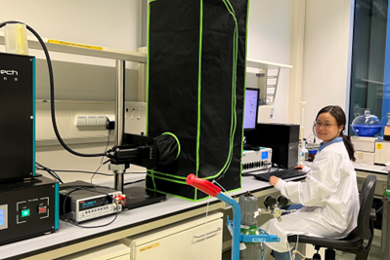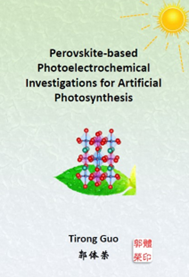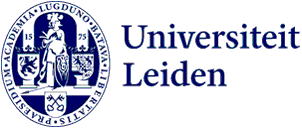
Tirong Guo discovered materials that bring efficient artificial photosynthesis closer
After hard work in the lab, Chemist Tirong Guo has developed a group of materials that provide a stable and efficient foundation for artificial photosynthesis. Will this enable the large-scale production of hydrogen and other useful compounds in the most sustainable way possible? Guo will defend her thesis on 21 January.
Imagine mimicking nature’s most remarkable process – photosynthesis – to create clean energy. This ambitious vision could provide us with hydrogen, the cleanest fuel, produced by splitting water, with oxygen as a bonus. CO2 from the air could also be captured. Plants use CO2 to produce sugar, while we could make a variety of fuels from it. Chemist Tirong Guo envisions: ‘If artificial photosynthesis were mainstream, we could directly convert sunlight into clean hydrogen, remove CO2 from the air, desalinate water, and even produce fertilisers. Artificial green plants could supply cities with clean energy and oxygen, and other environmental benefits.’
‘In contrast, artificial photosynthesis offers a one-step process.’
A significant improvement
It would indeed be a significant improvement compared to solar panels and wind farms, she emphasises. ‘Those systems require two steps: first, they convert energy from wind or sunlight into electricity, and then we use that electricity to produce green hydrogen.’ Each step involves energy loss, reducing overall efficiency. Additionally. this two-step process requires complex infrastructure for electricity storage and transport. ‘In contrast, artificial photosynthesis offers a one-step process.’
Exact replication of the plant is not the goal
Scientists have not yet succeeded in replicating the entire photosynthesis reaction – a complex cycle of sub-reactions involving various co-factors. Guo, who completed her studies in chemistry and material engineering in Tianjin, China, explains: The goal is not to exactly replicate the natural reaction. With different mechanisms and synthetic materials, we are aiming to achieve the same outcome. But instead of sugars, for example, we focus on producing hydrogen.’

Parts of the reaction are already working
Different steps of the reaction have already been successfully performed in the lab. ‘Several photocatalysts have been developed that can split water into hydrogen and oxygen using light, or convert CO₂ into fuels such as methane or methanol.’ These catalysts can be compared to the photosystems in chloroplasts in plants, but in the lab, metal oxides and semiconductors are being tested. ‘Despite these advances, the efficiency and stability of these systems are still insufficient for practical, large-scale applications.’
Wanted: efficient, stable, and scalable systems
So, what’s needed is a system that is efficient, stable, and scalable. Guo set out to find one. She focused on Ba₂Bi₂O₆ (BBO): double perovskite. ‘The structure, as well as the physical and chemical properties of this material can be adjusted. I tested many variants, which were not commercially available and had to be developed in the lab.’ She systematically studied various crystal structures. ‘From all these materials, I tried to make efficient photoelectrodes. Each variant brought its own challenges. Because very few studies have documented methods for modifying and applying them, I had to find the optimal temperature, film thickness and concentrations of added substances ... It took a lot of time. For instance, I developed my own synthesis and measurement system, which others can use to replicate my work.’
One turned out to be impressively stable and performed excellently
Guo tested a total of eight series with several variants and created a database that other researchers can benefit from. ‘In the end, a system in which I added La3+ ions – lanthanium – turned out to be impressively stable and performed excellently. This is a promising breakthrough for producing sustainable hydrogen in the future.’
It’s clear that Guo’s promising results didn’t come easily. ‘Despite all the challenges, I find it immensely rewarding and exciting to have worked on such pioneering research. It’s wonderful to contribute to the field of sustainable energy. I’d love to continue this work, whether in business or in academia.’

Thesis and defense
On 21 January 2025, Tirong Guo will defend her thesis, titled: Perovskite-based Photoelectrochemical Investigations for Artificial Photosynthesis. Her supervisors are Huub de Groot and Wentian Fu.
